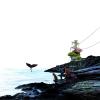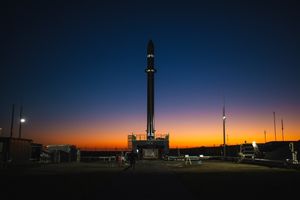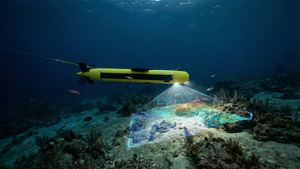One problem, three teams, no constraints
SOURCE: WSP
SUMMARY:
WORDS BY WSP TEAMS,
AS TOLD TO KATIE PUCKETT
DESCRIPTION:
THE CHALLENGE
“How could you use the operational area of an electricity substation to provide gains for biodiversity and the environment — for example, to reduce flood risk or generate renewable energy? Currently these developments have big areas of hardstanding and the buildings are large — dare I say uninspiring — steel-clad structures. As these are transmission assets, there are huge constraints due to electrical safety, operations, maintenance and cost, and we can’t create any extra hazards. At the moment, we deliver all of our biodiversity net gains in the non-operational area around the development — but does that need to be the case? What about green surfaces, photovoltaics, food production or using the heat generated from the equipment for something else? Different designs? Subterranean substations!”
Francis Williams / environmental net gain manager / Scottish & Southern Electricity Networks
1. Team UK
It’s very hard to start with a blank canvas for a substation. When a landscape architect sees huge areas of gravel, understandably their first reaction is that there’s surely something better that could be done with all that ground. Unfortunately, the gravel is not just there to keep the weeds down — it’s a safety feature to protect against stray currents. But we could be more rigorous about making sure that we only place gravel where it’s absolutely needed, and there are often plenty of areas where there could be grass or shrubs instead. "Using steel generates carbon dioxide, but you’re effectively locking it up when you build with timber” We could also green the building roofs, and add solar panels wherever there is a south-facing aspect. Very light plants like sedum mosses would require only a small amount of extra load-bearing, and fractionally more maintenance than a bare metal roof. That not only creates a habitat for wildlife, it reduces rainwater run-off and helps to alleviate flood risk. And it has an aesthetic value too — why should substations always be grey? There’s no reason why they should always be steel sheds either. Why not build the frame out of engineered timber instead? That would lower the overall carbon impact: using steel generates carbon dioxide, but you’re effectively locking it up when you build with timber. There are also issues with induced currents in steel buildings, so they must be carefully earthed. With timber, you avoid that problem. Surely it’s a win-win solution! Where the substation is relatively near to communities, the waste heat it produces could be channelled into greenhouses outside the site to provide growing facilities, as the Drax power station in North Yorkshire used to do. This would have to be located off site, at a suitable distance for security. But having a friendly next-door neighbour is potentially an advantage, as it creates opportunities for passive surveillance. It’s good for community relations too — usually no one wants a new substation on their doorstep. From a biodiversity and landscaping point of view, the fence around a substation is crying out for greening — trellises, climbing plants, screening from trees. But security is a very big constraint and that tends to rule it out. The owner has to protect against material theft, vandalism and terrorism, and also to prevent potential intruders from injuring themselves, as they will be partially liable. The standard in the UK now to have a non-climbable 3m-high palisade fence, with a clear space either side and clear lines of sight for CCTV. Trees too close to the perimeter risk becoming climbing aids. But you could look at the fence as an asset for other types of nature. It tends to keep out larger predators, and there is rarely any human activity in a substation. There are often plenty of small animals such as hedgehogs passing through or using it as a sheltered spot. It’s not unusual for older substations to become bat roosts, but newer buildings tend to be more solid with fewer openings for wildlife to enter. There’s no operational reason why we couldn’t introduce species-specific enhancements to create habitats in the structure, such as insect houses or bird boxes for swifts or swallows. Rats and squirrels can be a problem if they chew through the insulation around cables, and seagulls sometimes crash into transformer bushings. But other animals won’t do much harm. Substations and animals can live alongside one another quite happily. From WSP in the UK Substations are usually characterized as grey, industrial and void of life, but we believe it’s possible to change this image and turn them into nature-positive assets. For one thing, the well-drained and nutrient-poor soils that are necessary around these facilities could be used to establish dry meadows. In Sweden, meadows are a diminishing biotype, so promoting this kind of biodiversity can have quite a large impact on the overall sustainability of ecosystems. You could use different areas within the site to target certain plants and their associated insects, depending on which species your site analysis finds. “You can either work to hide the structure or take a different approach … Parts of it can be quite interesting, even beautiful” But the need to drain rainwater very quickly is a problem when we’re also trying to reduce stormwater run-off. If substations were required to manage their run-off through natural solutions, by channelling the water to where it could be cleaned and decontaminated, that would lead to a larger, more varied habitat area and better environmental quality. One solution would be to direct the water to less sensitive areas within the perimeter or just outside, to create a pond. Phytotechnology or phytoremediation is a way of using plants and associated microorganisms to store or break down different contaminants — so if the stormwater contains high levels of metal-contaminated leachate, we can use plants that manage heavy metals. Then there is the aesthetics of the buildings themselves. Substations are parts of the landscape, whether they are placed in remote areas or more urban settings. You can either work to hide the structure so that it blends into the surroundings or you could take a different approach — parts of it can be quite interesting, even beautiful. There can be something pleasing about the honesty of an industrial building, when it’s well done. Plants could either be used to soften or enhance the industrial feel. You could install a separate cage structure outside the substation, and then drape it with climbing plants — there’s a great example of how this might look in Zurich at the MFO-Park, which is within a weathered steel structure with 17m-high trellises. This would contribute to biodiversity and it can also help to reduce the urban heat island effect, making the local climate a little better. Substations are dynamic structures and can change at short intervals, which restricts how technical or involved solutions around them can be, but this kind of cage or trellis is very flexible and can be easily expanded. We use a design tool called the “green area factor” to help compare the environmental impact of different designs, and assess how much ecological area has been created in comparison with the total area of a site. It’s broader than biodiversity net gain because it also considers a site’s ecology, social value and climate, and additional factors such as air pollution or pollination can be added. This means that it is easy to create a version of the tool that is standardized for certain types of substations and encourages simple measures for enhancing a site’s value. It also serves as a push for designers to make sure that as much of the available space as possible is used for ecological, social and environmental benefit. It’s not always easy to have biodiversity consultants on every project. For a substation in an area with high ecological value, you might have a specific plan. However, on other sites you might have to simplify. One way of doing this is to apply a diverse and ecologically beneficial plant mix and corresponding soil improvements that does some good in lieu of a deeper ecological analysis and specific targets. It’s always possible to do something — it could even be mandated in design prescripts. In biodiversity projects, ease of implementation can be a good place to start. Once companies realise how easy it is to improve biodiversity, they might be more willing to take another step. That’s how you get the ball rolling. From WSP in Sweden To expand the challenge a bit, we set the substation in a densely populated coastal community on the eastern seaboard of the US — places like New York and Boston suffer from storm surges and tidal flooding. We thought about issues of environmental justice too — critical infrastructure and heavy infrastructure assets are often located within communities of colour or low-income populations. There is also the problem of food deserts, areas where there is a lack of nutritious, affordable food. One of our guiding principles was to look at how it could generate other benefits to become an asset to the neighbourhood. "Our substation could become a place to learn about nature and develop new skills" Recently we’ve worked on a lot of substation projects to blend them into the urban landscape, and also to condense their footprint so as to fit other uses on to the same plot of land, such as parks, parking lots, restaurants or commercial space. We were inspired by the Denny substation in Seattle too, where there’s a public park, community spaces and public art. Substation equipment tends to be placed on heavy-duty structures above the ground so that it can’t be flooded, especially since Hurricane Sandy. So we wondered: rather than just raising it above the storm-surge level, could we elevate it an entire floor, so that we can repurpose the footprint where the substation would have been? That would add an extra layer of security, and create an opportunity for more green space at grade. The walls of the building could become living walls, and you could encapsulate part of the structure to create wintergardens to produce food all year round, heated by the waste heat from the substation. We don’t have enough community gardens in Boston, and every little patch of land that is used to grow things is packed. Vegetable oil is typically used to cool the transformers in a substation — applying closed-loop, circular-economy principles, you could even grow the vegetables to produce it. It’s kind of a far-out idea, but to make a nature-positive asset, you need to figure out all the different inputs and outputs and connect them better. This is an opportunity for community engagement too — we could ask the community what they think would be most beneficial. Is it a park or a play space, or an educational facility where kids could study ecosystems? In these cities, there are a lot of challenges with ageing infrastructure that is expensive to fix. So if we can retain water on site, or clean it before it leaves, that can help to reduce the burden on public water systems and cut the pollution that is discharged into our water bodies. We could engineer a channel into the perimeter of the substation site to collect water run-off and filter it. In summer, tidal bioswales or a moat could create new types of habitat and ecosystem; in winter, it might freeze over and even become an ice rink for community recreation. Urban heat islands are a problem too, as paved areas and hard surfaces retain the heat of the sun. If we can soften them with greenery or bioswales, we would be reducing the temperature of that area even though the substation is still producing heat. After the destruction caused by Hurricane Sandy, designers have begun thinking about using nature-based solutions such as oyster beds to slow water as it enters and mitigate the worst impacts. Living shorelines require different types of maintenance, so that also provides educational or job-creation opportunities for the city. Our substation could become a place to learn about nature and develop new skills, in addition to everything else — a true asset to the community. We could even design it in such a way that when you’re on the site, you don’t even know there’s a substation above your head. From WSP in the US
KEYWORDS: TSX:WSP, WSP, The Possible
![]()


![]()





